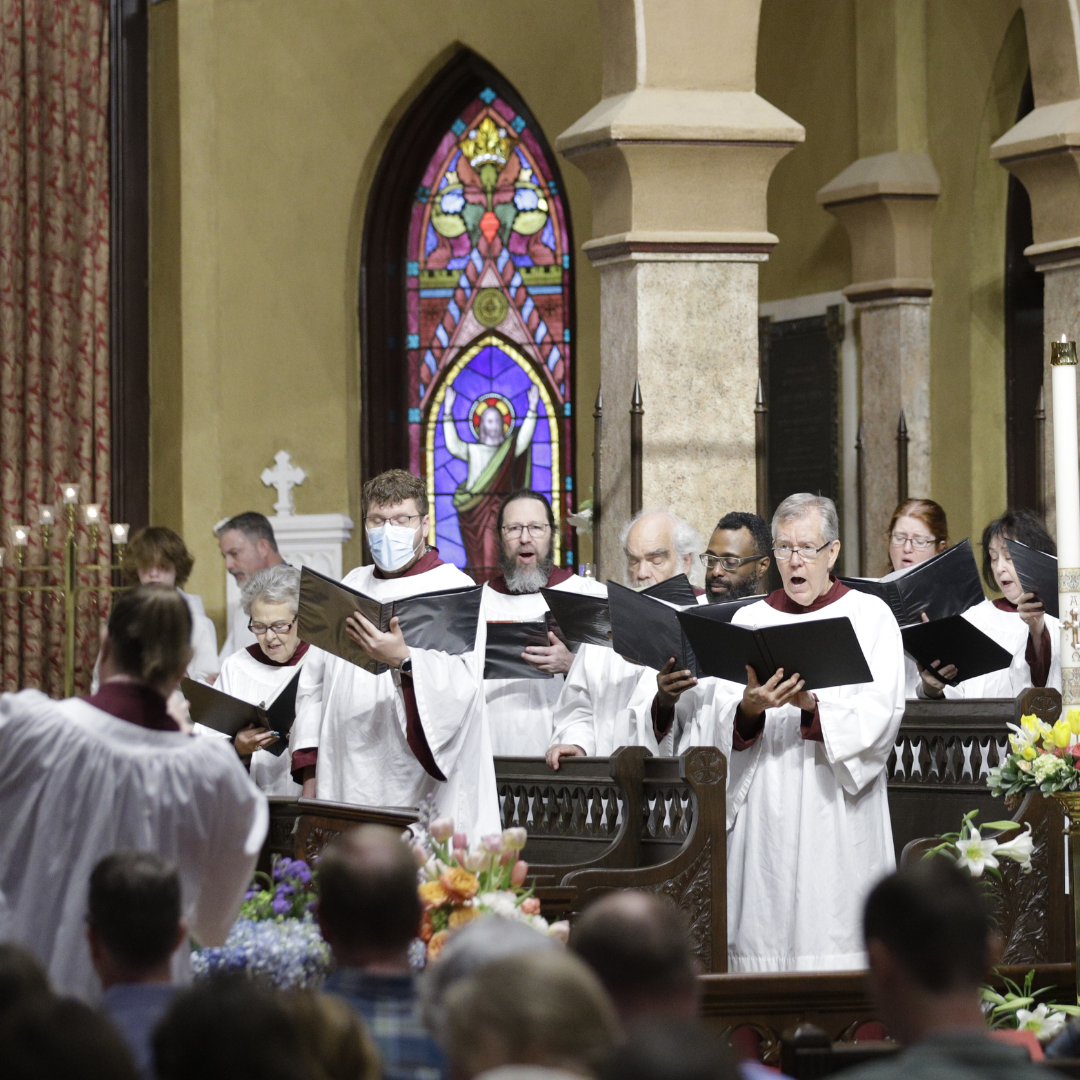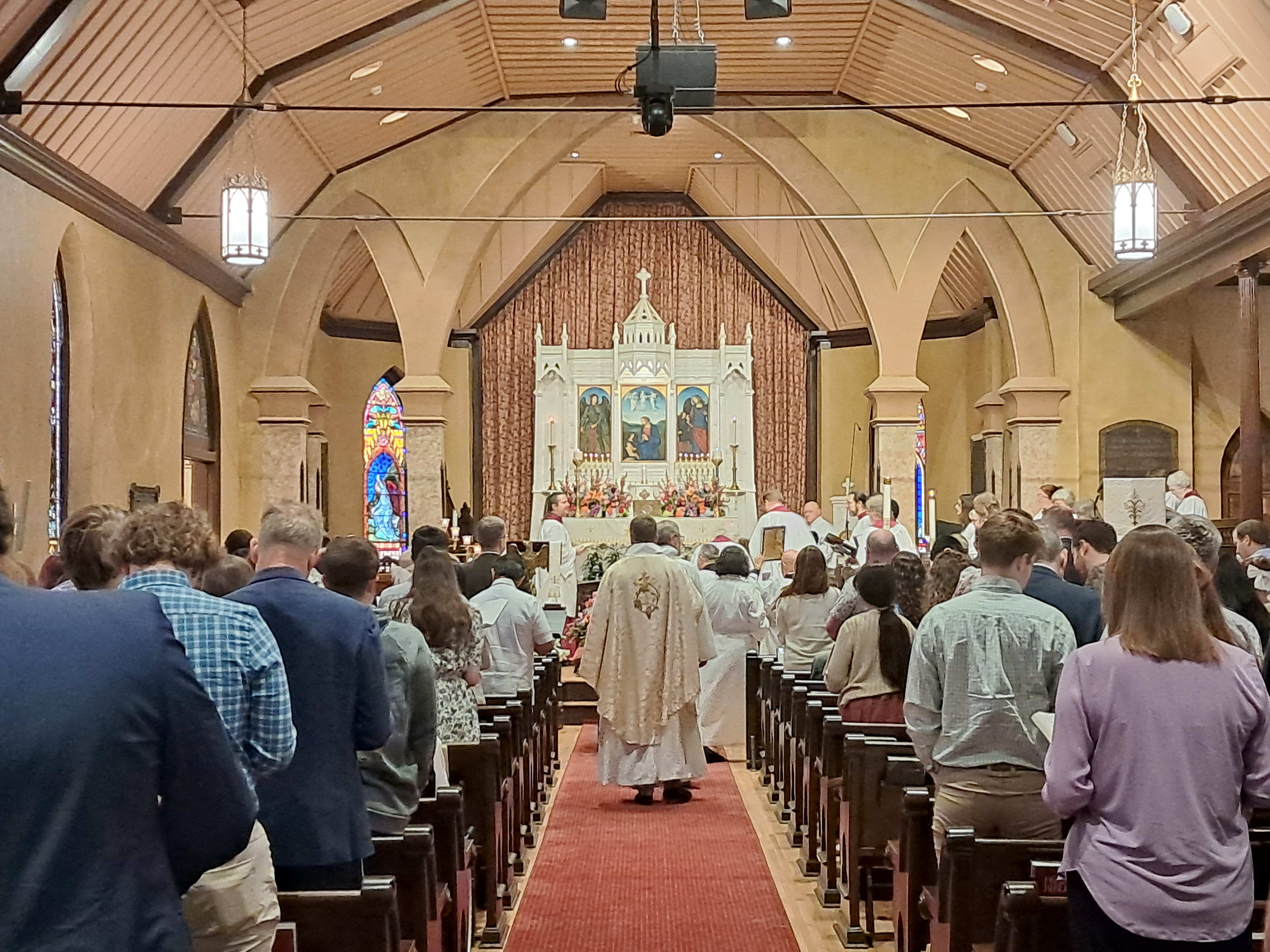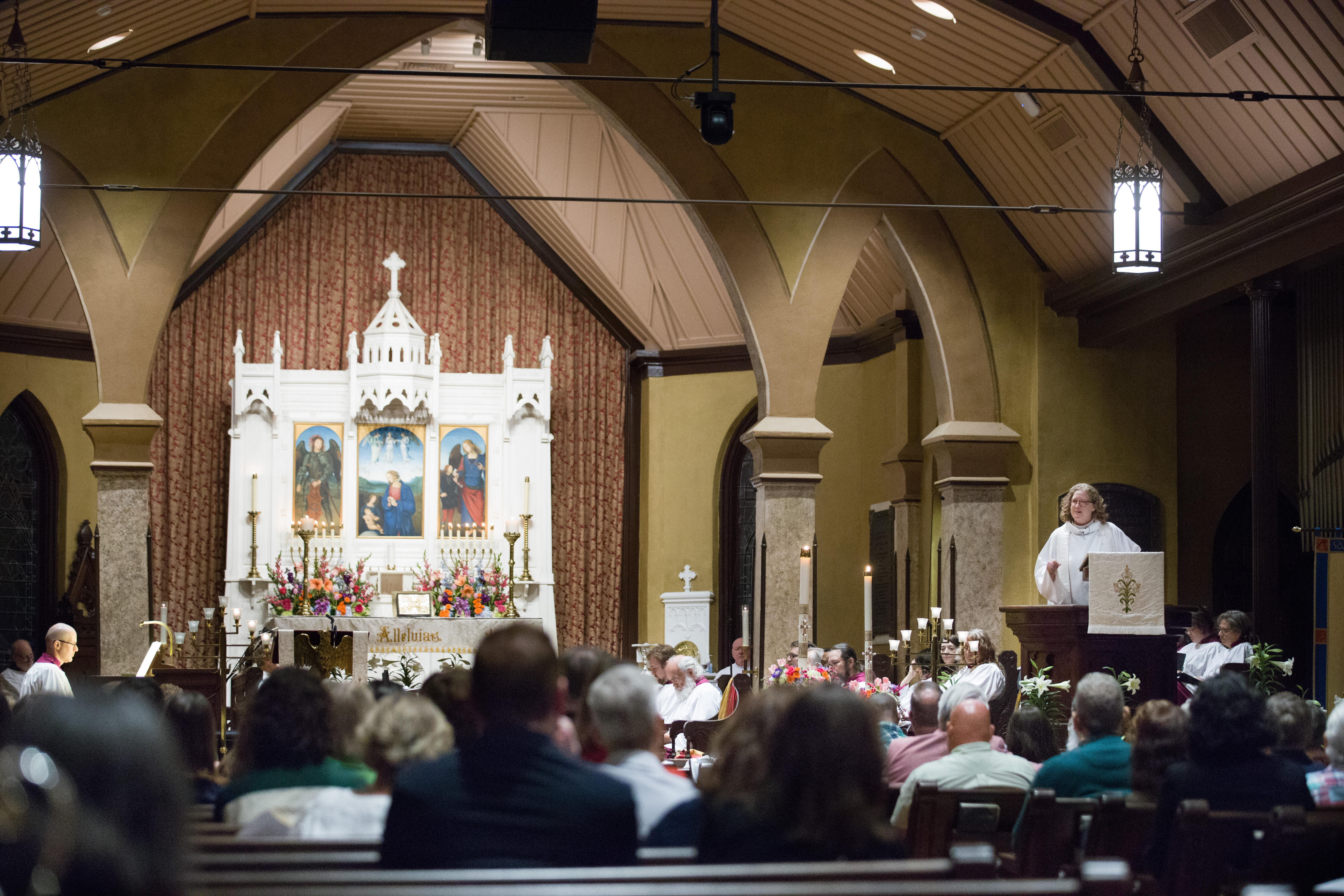
On the Last Sunday after the Epiphany (i.e. just before Lent begins), the Church has a second celebration of the Transfiguration of Our Lord.
The Transfiguration has always been of the utmost importance in the Eastern Churches, though it came to be observed as a feast rather late in the West. The Episcopal Church was the first Anglican body to adopt it and now celebrates it twice a year: on 6 August – the Feast of the Transfiguration itself, at a time of year when the connections between the Transfiguration and the Jewish harvest festival of Booths or Tabernacles (Sukkoth) are clear – and also this Sunday, when it serves as a bookend to the Season after the Epiphany, mirroring the Baptism of Our Lord and preparing the Church for the journey into Lent.
The Transfiguration is one of a series of manifestations in the Gospel accounts by which Jesus is revealed to be the Son of God. This is indeed the import of the first line of the Hymnal excerpt of an Office hymn for the feast, ‘O Light of Light, Love given birth’ (‘O nata lux de lumine’), which otherwise more or less recounts the narrative of the event. The Hymnal text will be heard set to music, in rich harmony afforded by five voice-parts, by the great 16th-century English composer Thomas Tallis, who wrote it for the Latin original of a different part of this hymn.
The Prayer Book Collect for the Feast of the Transfiguration itself focuses upon Christ’s glory and our desire to see it: ‘grant that we...may by faith behold the King in his beauty...’. The Introit chant used on both celebrations of the Transfiguration, with verses from Psalm 27, speaks of this same desire and suggests that it may be fulfilled in the place and act of worship: ‘Your face, O Lord, will I seek; do not hide your face from me. One thing have I asked of the Lord...that I may dwell in the house of the Lord...to behold the fair beauty of the Lord, and to seek him in his temple’.
The transfigured Jesus is, however, not only to be adored, but to be followed; this event is a preview not only of the risen and glorified Christ, but also of the transformation and union with God that await all those who earnestly seek the Lord, in which quest disciplines like those we are exhorted to undertake in Lent are a great aid. It is well to remember that in the Synoptic Gospels the Transfiguration is immediately preceded by Our Lord’s admonishment that we must take up our cross and lose our life in order to follow him, and followed by his prediction of his betrayal; the Collect for this Sunday prays ‘that we, beholding by faith the light of his countenance, may be strengthened to bear our cross, and be changed into his likeness from glory to glory’ (cf. II Corinthians 3.18, part of Sunday’s Epistle).
Our Sequence hymn, ‘O wondrous type! O vision fair’ (a 19th-century translation of another Latin Office hymn for the feast) accordingly not only recounts in a nutshell the vision of the Transfiguration but also makes clear its import: the glory ‘which Christ upon the mountain shows’ is also ‘glory that the Church may share’, ‘glory [that] shall be theirs above who joy in God with perfect love’. The Roman Collect for the feast, which will be heard in my choral setting at the Offertory, makes a similar point.
The liturgy and the season end with a hymn with which we began the season, now sung with its final stanza: ‘Songs of thankfulness and praise’ [135]. This culminating stanza, added to the original for its publication in the Hymnal 1982, not only recounts the Transfiguration as a series of manifestations celebrated in this season but also looks forward to Christ’s (and thus our) journey to Jerusalem, to Calvary, and ultimately to resurrected life.




Login To Leave Comment